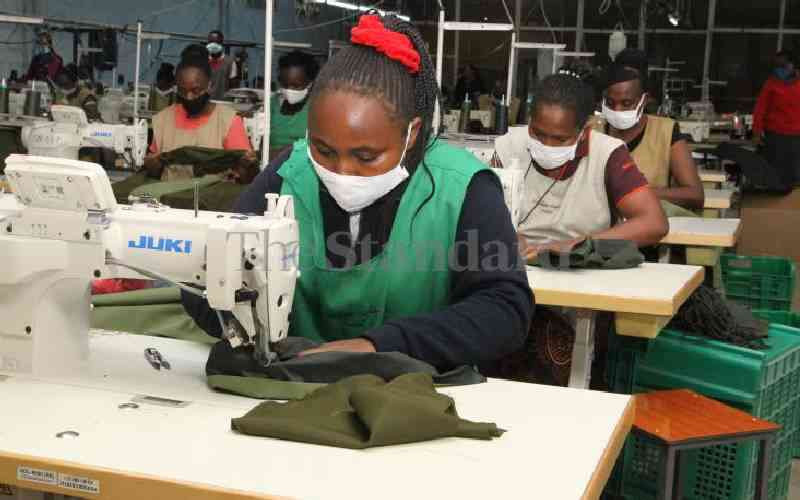
Luhya men and Kamba women are the majority among death row convicts. Meanwhile, Kikuyu men and women lead among those convicted for robbery with violence.
This is according to findings of a report by a task force formed to look into death sentencing and filed before the Supreme Court.
After the Supreme Court outlawed mandatory death sentence, it ordered former Attorney General Githu Muigai to file a report and proposal on how the 4,819 convicts held across the country would be re-sentenced.
The team randomly picked men and women on death row in 38 prisons across the country. From the data collected, it emerged that Luhya men form a majority of those in jail for murder, followed by Luo men. Kikuyu and Kisii men tie at third place.
On women, the data shows Kamba and Kikuyu women follow each other closely, then Luhya and Meru women follow in third and fourth place.
According to regions
According to the report seen by The Standard, a majority of men on death row hail from Western region (38 per cent) while a majority of the women (45 per cent) are from Eastern region.
Although 27 per cent of the men hail from Nyanza, there were no women from the region. At least nine per cent of the men are from Eastern. Only two per cent of the men and 15 per cent of the women on death row hail from Central.
Seven per cent of the men and five per cent of women are from Coast, and none of the offenders are from Nairobi. From Rift Valley, 18 per cent of those incarcerated for murder are men while 10 per cent are women.
It emerged that 70 per cent of the women lived in urban settings at the time of their conviction. Men who lived in rural settings were 50 per cent. Some 49 per cent of the convicts said they lived in urban centres.
With regards to religion, all the women and 84 per cent of the men are Christians, while nine per cent are Muslims, four per cent are agnostic or atheist and one man’s religion is unknown.
The report also reveals that men in customary or polygamous marriages are more likely to kill. At least 76 per cent of the male convicts said they are in customary or polygamous marriages.
At the same time, women in customary marriages and widows are likely to kill as 35 of the women are in customary marriages. A similar number said they were widowed.
Six men are single, two widowed and none divorced while four women are single and two divorced.
Stay informed. Subscribe to our newsletter
From those sampled, only three men on death row are persons living with disabilities. There are no women in this category.
In terms of family, a majority of men said their parents were alive while a majority of women said their parents were dead.
Interestingly, fewer men and women on death row come from single parents, divorced or separated parents. A majority come from families where both the mother and father are present.
It emerged that those with little or no education are the majority. At least 71 per cent of men said they ended their education at primary school while 95 per cent of women terminated their education at the same level.
Some 27 per cent of men and 20 per cent of women completed secondary school education. Only two per cent men and five per cent women completed their university education.
Scales tilt
Casual labourers and low income earners top list of men and women incarcerated for murder.
On robbery with violence, the scales tilt. Kikuyu men and women lead those on death row as a result of robbery with violence. Meru and Kamba men come second and third. Among women, Luo and Luhya come second and third.
A majority of robbery with violence suspects are secondary school graduates. Casual labourers top the list here too.
There are 3,872 prisoners condemned to die for robbery with violence.
Just as murder, it emerges that those incarcerated for robbery with violence were jailed in their prime years – between 26 and 35.
Those with both living parents are more likely to steal violently compared to those whose parents are dead. The trend is similar among those hailing from stable families and those whose parents are single, divorced or separated parents.
 The Standard Group Plc is a
multi-media organization with investments in media platforms spanning newspaper
print operations, television, radio broadcasting, digital and online services. The
Standard Group is recognized as a leading multi-media house in Kenya with a key
influence in matters of national and international interest.
The Standard Group Plc is a
multi-media organization with investments in media platforms spanning newspaper
print operations, television, radio broadcasting, digital and online services. The
Standard Group is recognized as a leading multi-media house in Kenya with a key
influence in matters of national and international interest.
 The Standard Group Plc is a
multi-media organization with investments in media platforms spanning newspaper
print operations, television, radio broadcasting, digital and online services. The
Standard Group is recognized as a leading multi-media house in Kenya with a key
influence in matters of national and international interest.
The Standard Group Plc is a
multi-media organization with investments in media platforms spanning newspaper
print operations, television, radio broadcasting, digital and online services. The
Standard Group is recognized as a leading multi-media house in Kenya with a key
influence in matters of national and international interest.









